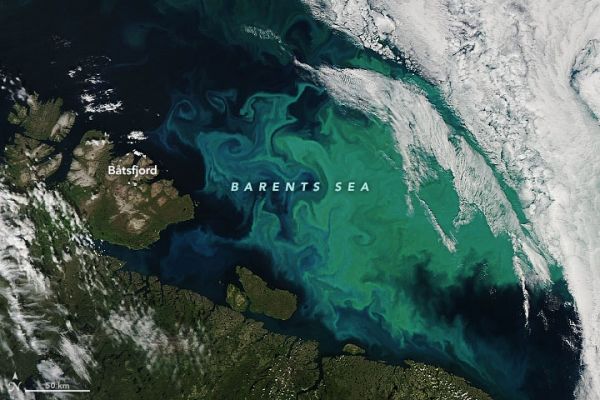During the spring and summer in the Barents Sea, north of Norway and Russia, phytoplankton show up in abundance. Clouds permitting, the showy displays of these blue and green “blooms” are visible in satellite images just about every year. Yet no two phytoplankton blooms are exactly alike.
From spring into early summer, the surface waters of the Barents Sea are well-mixed, and nutrients are plentiful. This is when blooms of diatoms tend to dominate. These microscopic phytoplankton, with their silica shells and ample chlorophyll, color the surface waters green.
By late July and into autumn, waters become more stratified and contain fewer nutrients. The summertime changes benefit coccolithophores, typically Emiliania huxleyi. Blooms of this type of phytoplankton—armored with plates of highly reflective calcium carbonate—make surface waters appear milky turquoise blue.
Continue reading at NASA Earth Observatory
Image via NASA Earth Observatory


